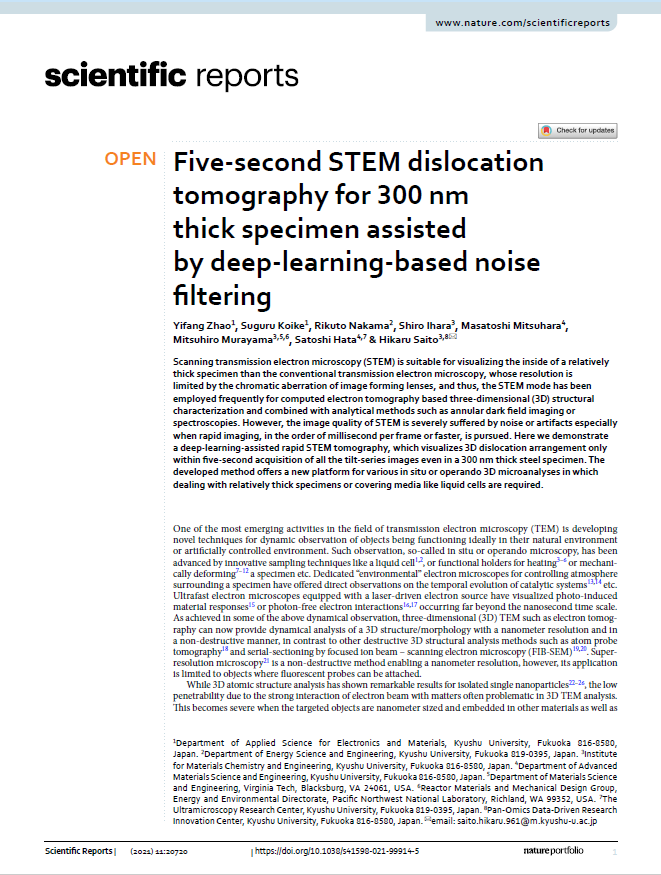Five-second STEM dislocation tomography for 300 nm thick specimen assisted by deep-learning-based noise filtering
Scientific Reports volume 11, Article number: 20720 (2021) Cite this article 876 Accesses 20 Altmetric MetricsLINKS
ABSTRACT
Scanning transmission electron microscopy (STEM) is suitable for visualizing the inside of a relatively thick specimen than the conventional transmission electron microscopy, whose resolution is limited by the chromatic aberration of image forming lenses, and thus, the STEM mode has been employed frequently for computed electron tomography based three-dimensional (3D) structural characterization and combined with analytical methods such as annular dark field imaging or spectroscopies. However, the image quality of STEM is severely suffered by noise or artifacts especially when rapid imaging, in the order of millisecond per frame or faster, is pursued. Here we demonstrate a deep-learning-assisted rapid STEM tomography, which visualizes 3D dislocation arrangement only within five-second acquisition of all the tilt-series images even in a 300 nm thick steel specimen. The developed method offers a new platform for various in situ or operando 3D microanalyses in which dealing with relatively thick specimens or covering media like liquid cells are required.
